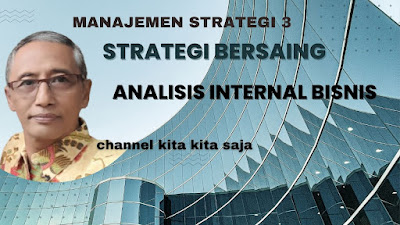Company Internal Environment Analysis
Internal Environmental Analysis is a comprehensive evaluation process of factors within the company that can affect business performance, such as an assessment of the strengths and weaknesses of the company.
Benefits of Internal Environmental Analysis
- Knowing the strengths of the company, management can develop strategies to outperform competitors.
- Provides a basis for making decisions regarding resource allocation, and new product development.
- The company can identify areas that need improvement to achieve better growth.
- Understand potential internal risks
A. Internal Environment Resources and Capabilities
A resource is something that a company has and can use to achieve its goals. These can be physical assets (land, buildings, machinery), financial assets (cash, investments), intellectual assets (patents, trademarks), and human resources (employees).
Capabilities: the ability of a company to combine resources effectively to create innovation, marketing capabilities, or efficient production capabilities.
Benefits of Analysis:
- Find resources to provide competitive advantage.
- Helps allocate resources optimally
- Identifies employee skill gaps and plans training programs.
Simple Example
- Resources: A restaurant has resources in the form of buildings, kitchens, cooking equipment, food ingredients, and employees.
- Capabilities: delicious dishes, providing good service, and managing inventory.
B. Organizational Culture
Organizational culture is the shared values, norms, beliefs, and behaviors within the company. It shapes the way the company works, communicates, and interacts.
Benefits of Analysis:
- Organizational culture supports the established business strategy.
- Positive culture increases employee motivation and productivity.
Simple Example
- Innovative organizational culture: The company encourages employees to think creatively and be open to new ideas.
- Customer-oriented organizational culture: The company pays attention to customer satisfaction.
C. SWOT Analysis
SWOT analysis is a tool used to evaluate the strengths, weaknesses, opportunities, and threats facing a company.
Benefits of Analysis:
- Provides a comprehensive overview of the internal and external conditions of the company.
- Helps formulate strategies by leveraging strengths, overcoming weaknesses, taking advantage of opportunities, and minimizing threats.
- By combining the results of internal analysis (strengths and weaknesses) with external analysis (opportunities and threats), companies can formulate more precise and targeted strategies.
Simple Example
- Strengths: High quality products, strong brand, experienced management team.
- Weaknesses: Limited financial resources, lack of innovation, limited distribution.
- Opportunities: Increased market growth, changing consumer preferences, emergence of new technologies.
- Threats: Intense competition, changes in government policies, economic fluctuations.

Tidak ada komentar:
Posting Komentar